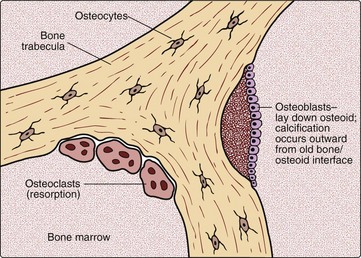38 Bone is constantly being broken down and reformed in the process of bone remodelling (Fig 38.1). The clinician looking after patients with bone disease will certainly need to know to what extent bone is being broken down, and, indeed, if new bone is being made. Biochemical markers of bone resorption and bone formation can be useful in assessing the extent of disease, as well as monitoring treatment.
Bone disease
Bone metabolism
Bone disease







